If you are using SEO Manager, then you can see something like this warning:

If you dive into these statistics, you will see the following message:
Many people wondered how we determined that exactly 90 links are that magic number and whether it is a strict limit or just a recommendation. To answer these questions, I'm going to look at the history and find the consequences of exceeding this barrier of 90 references.
Where did we get the number 90?
The number 90 appeared for the first time from official sources of Google and then began its journey through many Internet resources. one of his posts, first quoted the following phrase from a Google instruction for webmasters:
Make sure that the number of links on the page is less than 90.
According to this limit, search spiders loaded a certain amount of information on a page. No matter how strange it may sound, the limit of 90 links worked perfectly for placing copies of pages in the search cache.
Does the site impose sanctions for exceeding this amount?
Before going further, I would like to say that for exceeding this limit, no site has yet received any sanctions from the search engines. In an interview responded to Matt Cutts as follows:
"Make sure that the number of links is less than 90" is a purely technical recommendation, not a quality one. This does not mean that if there are 91 or 92 links on the site page, they will remove it from the index. You need to remember that this is done only to add a page to the cache.
From this point on, Google began to ignore links located after a certain point, but it was even worse that it stopped transmitting reference weight (PageRank) through them. Indexation of the page remained unchanged, no sanctions were imposed.
Is the number 90 still a limit?
After Matt Cutts commented on Google’s instructions, the next phrase “less than 90” disappeared from there. This was confirmed by numerous researches and experiments of SEOers and discussions in the Google blog. Google engineer John Mu said the following:
Like many other "limits" of Google, this number is not accurate and depends on the authority of the site. In addition, Google does not stand still, and with this changes and this number (especially after entering "Caffeine").
So, is there a place to be this restriction today?
In short, yes. The following rule invariably works in SEO: the more links on a page, the less weight each of them transmits. This is what Matt thinks about it:
In other words, it sounds like this: the more links there are on the page, the less weight each of them transmits. Of course, today's PageRank transmission system is much more complicated, but let's take a look at a few simple examples.
Example 1: 3 inner pages of the second level
Suppose we have a very simple site, consisting of a main page and three internal pages, to which there are links from the main one. I will simplify the PR transfer model and divide the main page PR into three parts. However, Google does not allow to transfer all PR pages to others, therefore, let's say that the page will transmit 85% of PR. As a result, we get about the following:
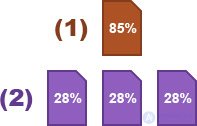
We see that each page receives approximately 28% of the PR of the main page. You should not take these numbers for accurate, since I have simplified the real model of PR transmission.
Example 2: 140 inner pages of the second level
Now let's increase this number of pages to 140. The distribution of PR will look like this:
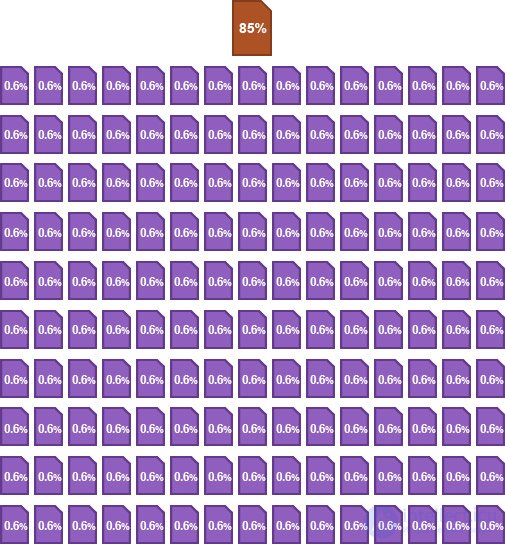
Dividing 85% of the original PR of the main page by 150, we get 0.6% per page. This scheme clearly shows how internal PR simply dissolves as the number of pages grows.
What is the optimal number of links?
The unequivocal answer to this question does not give due to the fact that in SEO there are a huge number of nuances. When creating a site, we must find a compromise between the depth of the site structure, the remoteness of the internal pages from the trust pages and the too simple ("flat") structure of the site.
Many SEOs recommend using a structure as simple as possible, however there is a risk that the entire weight of the main page will be spread over a lot of internal ones. Are all your 140 pages equally important and deserve the same PR? Most likely no.
That is why we must determine which pages to link to from more trustworthy, and to which not. Perhaps the 90 link rule is already outdated, but you can still rely on it.
At the same time, experiments on new sites give their results, on the basis of which I try to do the internal weight distribution also with maximum efficiency and restriction of internal links, as well as clear pumping of the necessary pages by internal linking.
For example, let's take projects from SAPE and look at the number of internal links.

Of course, the main goal of so many links is simply to include as many pages as possible into the index. Let us analyze the reference structure of such a project and how much weight will be on the pages.
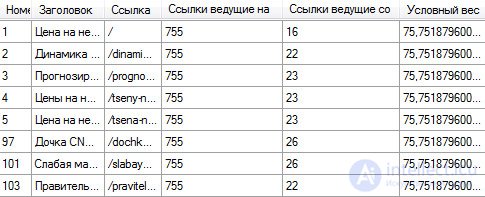
With a conditional weight of 75+ units - a large number of pages, further less, but after the first 30 pages, for the rest, the weight spreads absolutely without control, when the system pages have more weight than the content pages.
On the other hand, we will look at projects from TOP, one client, which was re-linked to the main request.
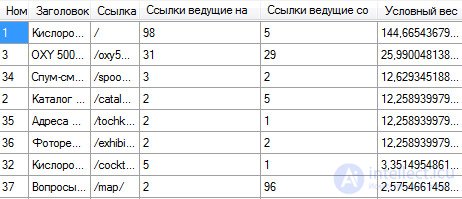
Controlled internal relink. Although, perhaps, not a very correct example, it is "flavored" with external links. Let us take another example, where not one page is moving, but several dozen, with all this - a satellite that was made for traffic.
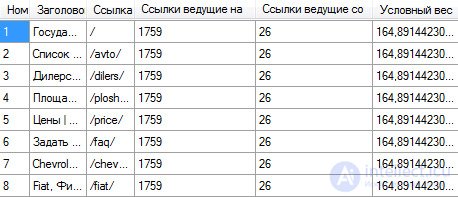
Controlled relinking of internal pages on the satellite. Pumped a couple of dozen pages, as well as pages LF do not have unnecessary links, which allows them to feel great in the LF top.
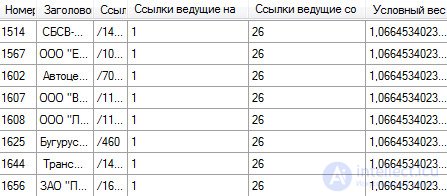
The difference in the last two pictures is palpable? - I think yes, internal linking is clearly calculated, as a result, without investing in the low frequencies, we have decent traffic for the satellite.
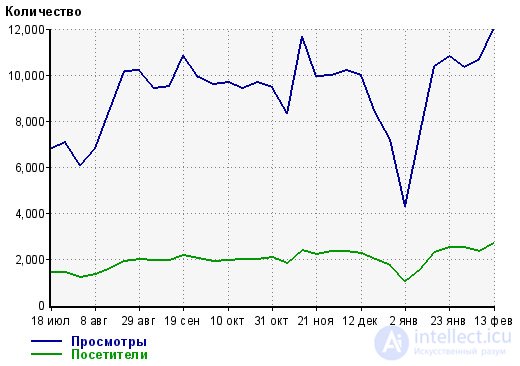
HF for this satellite, under which the pages were pumped - also in TOP, the main request in TOP-3. In this case, the reference to the project - 10 USD per month, 27 links.
I try not to reach the threshold of 90 internal links on ongoing projects and satellites, and I also do not purchase them on pages containing more than 90 internal links.
What parameters of internal links when developing projects and buying links do you stick to?


Comments
To leave a comment
seo, smo, monetization, basics of internet marketing
Terms: seo, smo, monetization, basics of internet marketing